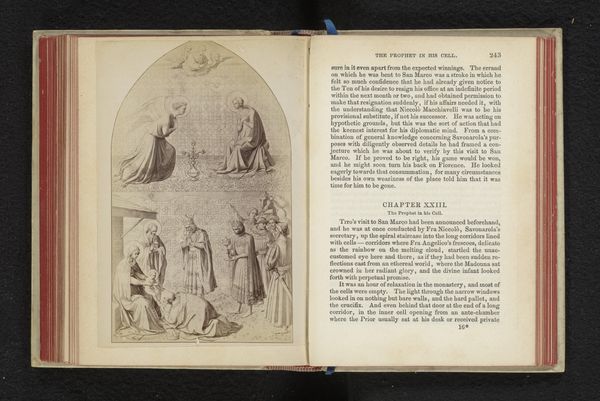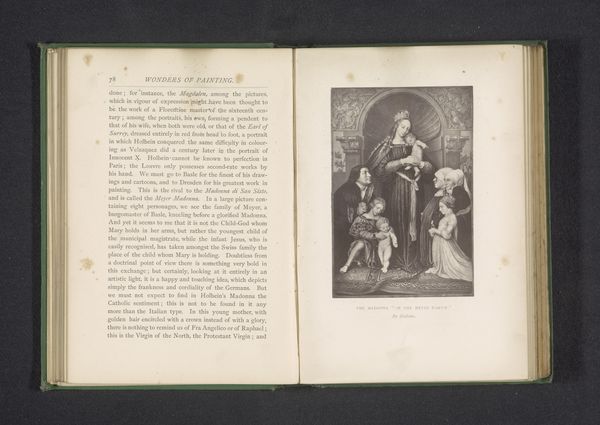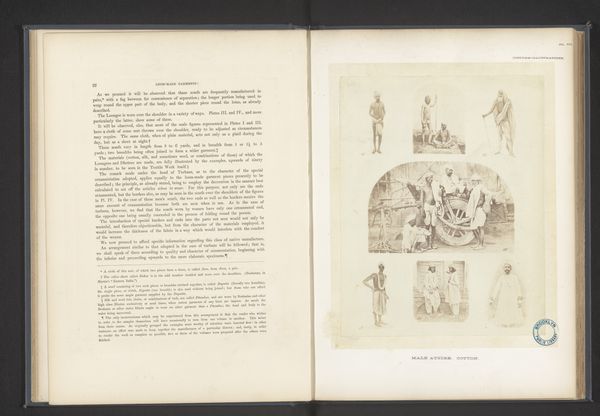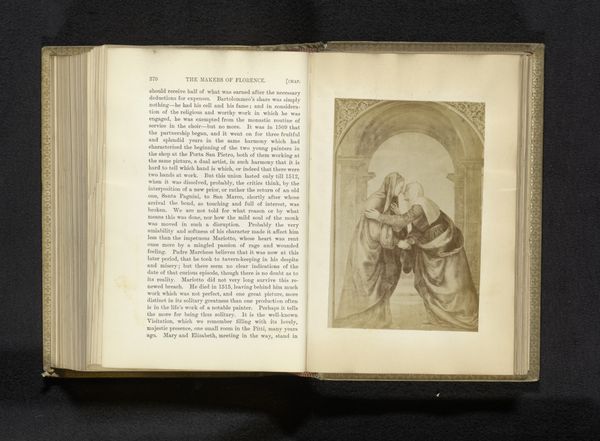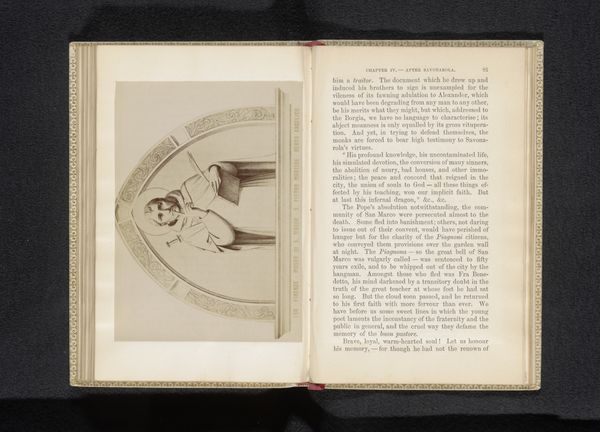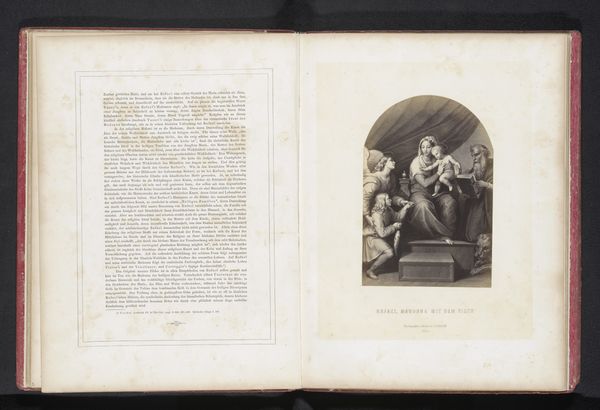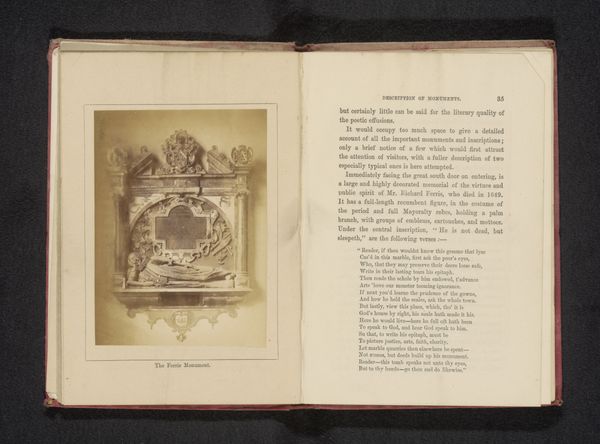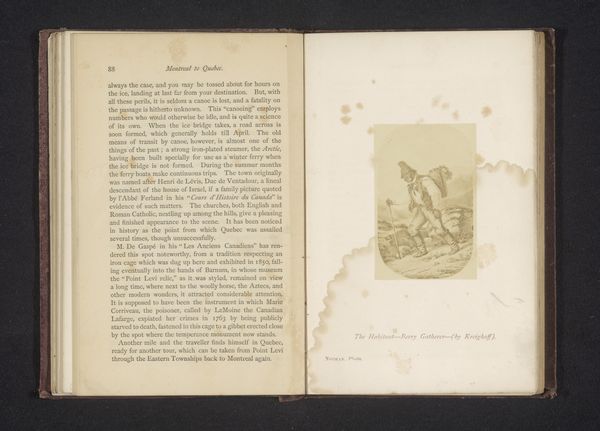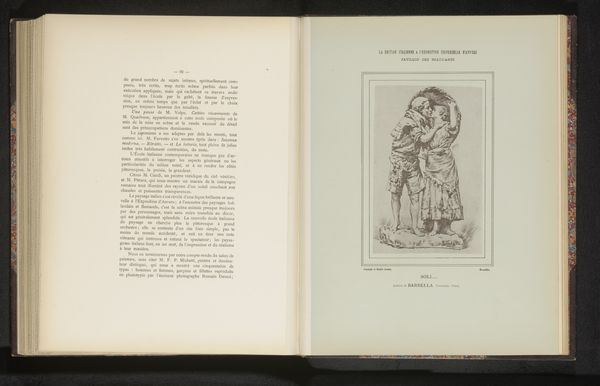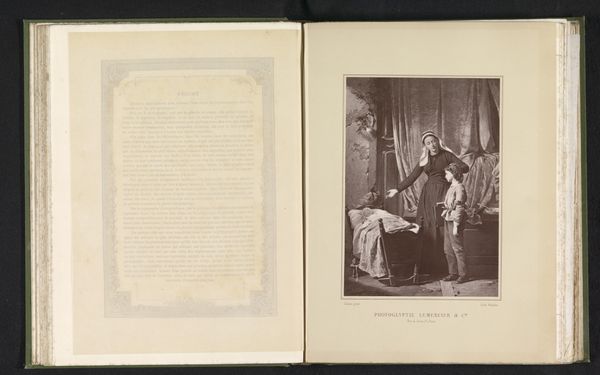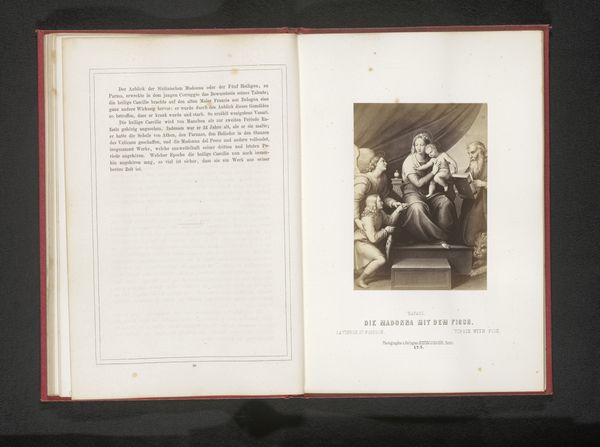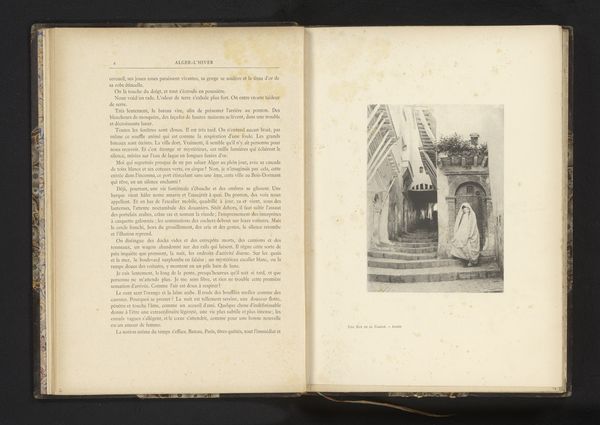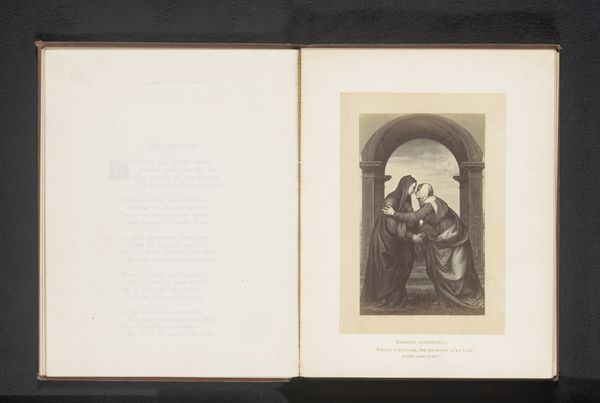
Fotoreproductie van een prent naar een fresco, voorstellende het lege graf van Maria before 1890
0:00
0:00
print, etching, fresco, engraving
#
portrait
#
narrative-art
# print
#
etching
#
figuration
#
fresco
#
11_renaissance
#
history-painting
#
italian-renaissance
#
engraving
Dimensions: height 137 mm, width 97 mm
Copyright: Rijks Museum: Open Domain
Curator: Here we have a photographic reproduction of a print, most likely an engraving or etching, of a fresco predating 1890. The work depicts the empty tomb of Mary. Editor: The scene is dominated by shades of sepia and cream; it's a study in stillness and reverence. What strikes me most is the positioning of the angel and Christ figures at opposite ends. Curator: Yes, the composition invites some interesting reading. Let's consider the original fresco itself, part of the Italian Renaissance movement. Its creator engaged with narratives reflecting the intersection of faith, power, and artistic patronage. How does the reproduction alter this understanding, by stripping the image of color and texture? Editor: Absolutely. The angel sits to the side of the sarcophagus. The angel's role is key here. Throughout the ages, angels herald significant transitions. Is this pose a way to portray Mary’s assumption to heaven? Also, notice the contrast between Christ's ethereal presence above the tomb versus the palpable weight of grief held by the apostles, the psychological depth is rather interesting. Curator: It really is fascinating how the artist frames gender within this spiritual narrative, where Mary’s absence becomes the catalyst for the disciples' mourning and subsequent encounters. This image functions as an ideological canvas of faith in the face of loss and uncertainty. Also, do we know the social class or any marginalized groups who commissioned it? Or its place within Renaissance understandings of art as social performance? Editor: The shift in rendering the narrative for modern eyes does subtly shift the focus. Instead of the ethereal colors in a fresco it has been rendered here in stark print—perhaps the meaning behind this shift in materiality and the weight of tradition behind this decision, creates even deeper cultural meaning through form. Curator: Indeed, tracing these layers and intersections allows us to grapple with a complex network of values encoded within its visual language. Editor: In essence, by exploring artistic intent and spiritual storytelling we open ourselves to a new and vibrant interpretation, creating cultural insight that helps ground historical continuity within shifting visual paradigms.
Comments
No comments
Be the first to comment and join the conversation on the ultimate creative platform.

